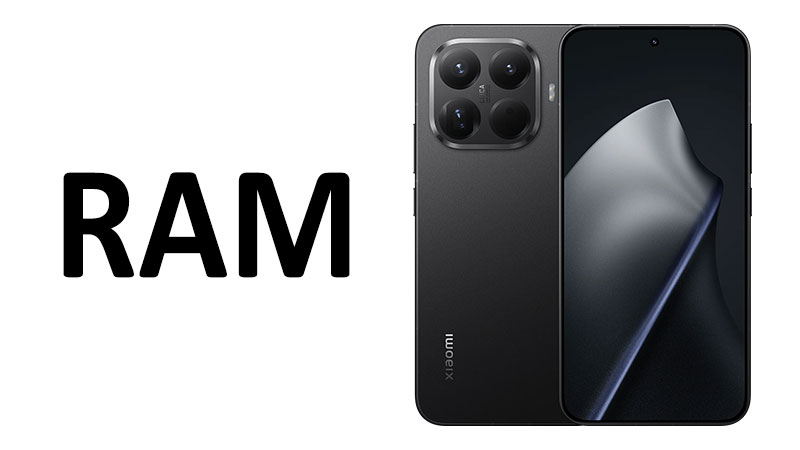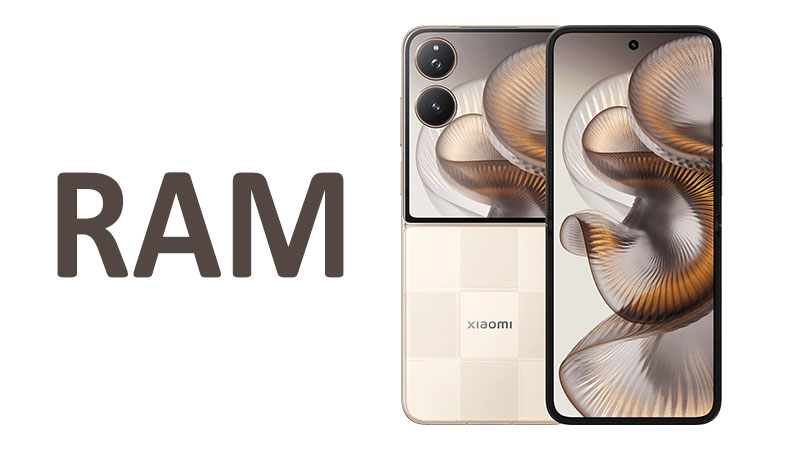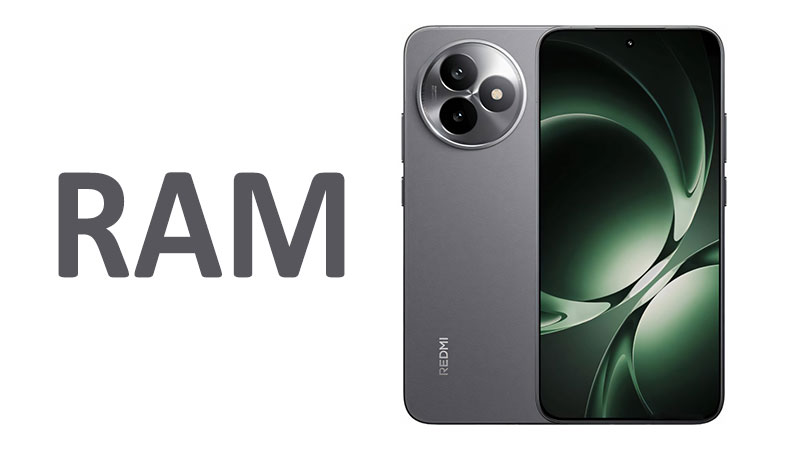The Xiaomi 15T RAM specification is a key indicator of its performance potential. This critical component serves as the phone’s active workspace. It directly dictates the smoothness of operations. The speed of the RAM influences every single user interaction. The Xiaomi 15T features a robust 12GB of RAM. This capacity positions the device firmly in the high-performance segment. This detailed analysis explores what 12GB of RAM means for the everyday user. It examines how this memory capacity enhances speed and multitasking capabilities.
The Core Specification: Unpacking the 12GB RAM Advantage
A mobile phone’s memory capacity is a fundamental hardware metric. The 12GB installed in the Xiaomi 15T is a clear statement of intent. It signifies a focus on professional-grade performance.
12GB: The Standard for Modern Power Users
The Xiaomi 15T comes equipped with 12GB of Random Access Memory. This size is generally considered the sweet spot for modern premium smartphones. It provides significantly more headroom than the 8GB standard often seen in mid-range devices. This capacity ensures smooth operation under heavy loads. It is necessary for running demanding applications efficiently. This figure is not just about bragging rights. It is a promise of reliable, sustained performance.
The Importance of LPDDR5X Memory Type
The capacity alone does not define memory performance. The type of RAM technology is equally important. The Xiaomi 15T likely utilizes LPDDR5X technology. LPDDR stands for Low-Power Double Data Rate. The “5X” denotes a specific, highly optimized generation. This memory type offers vastly improved data transfer speeds. It simultaneously maintains superior power efficiency. Fast LPDDR5X reduces the latency between the processor and the active memory. This translates directly to quicker app launches and faster data processing. It ensures the 12GB is utilized to its maximum potential.
Differentiating RAM from Internal Storage
New buyers often confuse RAM with internal storage. It is important to clarify their distinct roles. RAM is the phone’s temporary working memory. It actively holds data for currently running applications. Internal storage, like 256GB or 512GB, is for permanent file storage. It keeps photos, videos, and installed apps safe. The 12GB of RAM is the workspace size. The larger the workspace, the more projects the phone can handle at the same time.
How MIUI/HyperOS Optimizes 12GB
Xiaomi’s custom operating system, MIUI or the newer HyperOS, is highly customized. This system often uses clever techniques for memory management. The operating system uses the 12GB to keep frequently used system processes active. It allocates generous buffers for its proprietary features. This strategy ensures the system remains responsive even with many background tasks. The combination of 12GB and Xiaomi’s optimization results in a very fast user experience.
Performance and Speed Implications
The 12GB RAM acts as a force multiplier for the Xiaomi 15T’s primary processor. This partnership is what creates the phone’s signature speed and fluidity.
Unleashing the Processor’s Full Potential
The Xiaomi 15T relies on a powerful flagship-grade chipset. This processor, likely a high-end Snapdragon or Dimensity, requires massive data throughput. The 12GB of LPDDR5X RAM serves as the high-speed pipeline. It constantly feeds the processor the necessary information. This continuous, rapid data supply prevents system bottlenecks. It allows the processor to operate at its peak efficiency. The large RAM pool ensures the processor is never left waiting for data.
Enhancing Mobile Gaming Experience
Serious mobile gaming places extremely high demands on system memory. Modern console-quality games require storing huge amounts of graphical data. Textures, models, and game logic must reside in active memory. The 12GB capacity easily handles these massive resource requirements. It ensures that games load quickly and run without unexpected crashes. More critically, it helps prevent frame rate drops. This stability is essential for a smooth and competitive gaming session. The 12GB makes the Xiaomi 15T a true gaming powerhouse.
The Link to Thermal Management
Fast RAM can indirectly contribute to better thermal management. When the CPU accesses memory quickly, it spends less time actively searching for data. The processor works efficiently and finishes tasks faster. This reduction in unnecessary processing activity generates less heat overall. While the primary cooling is handled by vapor chambers, 12GB of fast RAM aids in keeping the chipset cooler. This means the Xiaomi 15T can sustain peak performance for longer periods. It minimizes the effect of thermal throttling.
Accelerating App Loading and Startup
Every time an application launches, its core files must be copied into the RAM. A large and fast RAM module speeds up this initiation phase dramatically. With 12GB, the system has ample room to pre-load data for frequently accessed applications. It anticipates user needs based on learned behavior. This technique makes application launches feel virtually instantaneous. Users enjoy an experience free of delays or frustrating loading screens. This speed is noticeable in every interaction.
Multitasking Mastery and System Fluidity
The real-world benefit of 12GB of RAM is most visible during complex multitasking. The Xiaomi 15T is built to handle the most demanding user workflows.
Eliminating Background App Reloads
The Android operating system, especially with custom overlays, is memory-hungry. It attempts to keep many apps running in the background for quick access. Phones with insufficient RAM are forced to close these background apps. This leads to frustrating reload times when switching back to a previous application. The 12GB capacity largely eliminates this common issue. It allows the system to keep a greater number of large apps suspended and instantly accessible. Users can jump seamlessly between a spreadsheet, a browser with many tabs, and a social media app.
Optimizing Split-Screen Functionality
The Xiaomi 15T’s large screen is perfectly suited for split-screen multitasking. Running two powerful applications simultaneously demands vast memory resources. For example, live streaming a video conference while referencing a large PDF requires significant RAM. The 12GB easily supports this parallel processing without lag or stutter. This capability enhances the phone’s productivity value substantially. It allows users to manage complex tasks entirely on the mobile device.
Xiaomi’s Virtual RAM Feature
Xiaomi often includes a feature called Virtual RAM or Memory Extension. This feature uses a portion of the internal storage to temporarily act as extra RAM. The system can allocate up to 3GB or 5GB of storage for this purpose. While slower than physical RAM, this feature offers a helpful buffer. This gives the 12GB of physical RAM an effective ceiling of 15GB or 17GB. This extra buffer ensures stability during extreme memory spikes. It is another layer of performance assurance for the user.
Future-Proofing for Software Evolution
Mobile applications and operating systems inevitably become more resource-intensive. Today’s 12GB capacity is likely to be the minimum standard in a few years. Investing in 12GB now ensures the Xiaomi 15T retains its performance edge for longer. The phone will comfortably handle future versions of Android and HyperOS. It accommodates the increasing demands of next-generation applications. This provides a strong return on investment in terms of longevity.
Specialized Comparison: Xiaomi 15T RAM Against Competitors
Evaluating the 12GB RAM against its key market rivals helps define the Xiaomi 15T’s competitive positioning. The T-series typically aims for flagship performance at a lower price point.
Versus Previous Generation: The Xiaomi 14T
The previous Xiaomi 14T model might have offered an 8GB base configuration. It may have used the slightly older LPDDR5 technology. The 15T’s standard 12GB RAM and LPDDR5X represent a clear performance upgrade. This increase is a tangible improvement for power users. It provides significantly better app retention and system responsiveness. The 15T is designed to offer a smoother, more current-generation user experience. This leap in memory capacity is a key selling point over the older model.
Versus Primary Android Flagships (Samsung/Google)
Top-tier flagships from competitors, like the Samsung Ultra and Google Pixel Pro XL, often offer 12GB as their base. They sometimes provide an upgrade option to 16GB. The Xiaomi 15T competes aggressively by making 12GB its standard offering. This ensures immediate performance parity with the very best devices. The slight difference between 12GB and 16GB is minor in most real-world scenarios. This puts the Xiaomi 15T on equal footing for core speed and multitasking.
Versus High-End Competitors (OnePlus/Motorola)
Competitors in the “flagship killer” category often feature 8GB or 12GB options. The Xiaomi 15T’s standard 12GB configuration makes it highly competitive. It avoids the performance ceiling of 8GB phones. This consistency in memory capacity allows the 15T to focus its competitive edge elsewhere. It focuses on features like faster charging or custom camera sensors. The 12GB RAM ensures the phone will not lose speed to rivals in terms of raw multitasking power.
Versus the Xiaomi 15 Pro Model
The top-tier Xiaomi 15 Pro model will likely offer a 16GB RAM option. The 15T model targets a slightly different consumer. It focuses on offering 90% of the performance for a significantly lower cost. The 12GB is a perfect specification for this goal. The 4GB difference will only matter to the most niche, professional mobile creators. For the vast majority of users, the 12GB of the 15T provides all necessary performance. This distinction is important for pricing strategy.
Pros and Cons of 12GB RAM in the Xiaomi 15T
The 12GB memory allocation is a strong advantage. However, like any technical specification, it carries subtle implications that buyers should consider.
Advantages (Pros) of 12GB RAM
1. Exceptional Multitasking Efficiency
The 12GB capacity ensures that background applications remain loaded. This allows for near-instantaneous switching between any active programs.
2. Optimized for Custom OS
The capacity is perfectly tuned for Xiaomi’s operating system. It provides the necessary resources for all of MIUI’s or HyperOS’s custom features and optimizations.
3. Excellent Gaming Stability
Mobile gamers benefit from the large memory pool. It ensures complex games run at stable frame rates without memory-related bottlenecks.
4. Competitive Price-to-Performance Ratio
Offering 12GB as standard provides exceptional value. It places the 15T memory specification on par with much more expensive flagship devices.
5. Sufficient Future-Proofing
The 12GB capacity provides a solid cushion against the increasing demands of future software updates. The phone will maintain speed for a long time.
Disadvantages (Cons) of 12GB RAM
1. Overkill for Light Users
A user focused purely on light tasks like browsing and messaging will not utilize the full 12GB. This extra capacity slightly increases the device’s base cost unnecessarily for them.
2. Not the Absolute Maximum
While 12GB is excellent, some rival models offer a 16GB option. The Xiaomi 15T does not offer the absolute maximum capacity for memory-intensive niche tasks.
3. Battery Life Nuance
Even highly efficient LPDDR5X memory draws a small amount of passive power. A larger chip, even an efficient one, draws slightly more than a smaller 8GB chip.
4. Relies on Software Optimization
The true benefit of 12GB relies heavily on the quality of Xiaomi’s RAM management. If the OS is poorly optimized, the full potential may not be realized.
Important Points a Buyer or Reader Should Know
Understanding the functional role of the 12GB RAM is essential for making an informed purchase decision. Buyers must see this spec in the context of the whole system.
The Role of Virtual RAM
The presence of the Virtual RAM feature adds a layer of complexity. While it extends the effective memory, users should treat it as a secondary resource. Physical 12GB RAM is always faster and more reliable than virtual storage memory. Buyers should focus primarily on the 12GB physical memory. The virtual extension is a beneficial safeguard, not a core resource.
RAM and Processor Symbiosis
The 12GB of RAM is optimized to work specifically with the Xiaomi 15T’s processor. It is not just the memory size that matters. It is the bandwidth compatibility between the processor and the RAM chip. This high-speed synchronization is what prevents bottlenecks. It ensures maximum data transfer rates are consistently achieved. The RAM and CPU must always be seen as a combined performance unit.
Identifying the 12GB User
The 12GB RAM target is a specific type of user. This person regularly switches between large memory-intensive applications. This includes professional video editors, heavy mobile gamers, and users who manage multiple demanding work applications. If your usage involves minimal app switching and only light browsing, 8GB may suffice. The 12GB is an assurance of future-proof speed and capability. It is worth the extra investment for long-term power usage.
MIUI/HyperOS Memory Habits
Xiaomi’s operating system is known for aggressive background process management. The 12GB capacity allows the user to ease these restrictions. Users can adjust settings to allow more apps to remain active in memory. This improves convenience but may slightly increase battery consumption. The 12GB provides the user with the flexibility to choose their preferred balance. They can choose between maximum performance or maximum battery life.
Conclusion: 12GB RAM is the Performance Benchmark
The Xiaomi 15T RAM specification of 12GB is a definitive statement of high-end performance. It is the optimal memory capacity for today’s most demanding mobile tasks. The utilization of high-speed LPDDR5X technology ensures that this memory is both fast and efficient. This capacity creates a seamless, lag-free user experience, even under intense multitasking loads.
This memory configuration ensures the Xiaomi 15T is highly competitive against premium flagship devices. It provides excellent longevity and stability for future software releases. For the vast majority of power users, mobile gamers, and productivity-focused individuals, the 12GB RAM is a compelling and fully justified specification. The Xiaomi 15T delivers a benchmark performance experience that will satisfy even the most demanding consumer.
Frequently Asked Questions (FAQ)
1. Does 12GB of RAM make the phone load games faster than 8GB?
Yes, 12GB of RAM allows games to load required assets quicker. This reduces initial load times and improves stability during heavy gameplay moments.
2. Can the Xiaomi 15T’s 12GB RAM be extended using software?
Yes, Xiaomi typically includes a Virtual RAM feature. This allows the system to temporarily borrow internal storage to increase the effective memory buffer.
3. What is the role of the processor with the 12GB RAM?
The processor relies on the 12GB RAM as a high-speed buffer. The RAM feeds the CPU data quickly, allowing the processor to execute tasks efficiently and without delay.
4. Will 12GB of RAM use up more battery than 8GB?
The difference in power consumption is minimal. The efficiency of LPDDR5X technology and the large battery capacity negate any minor increase in power draw from the larger chip.
5. Why do iPhone models often have less RAM than the 12GB Xiaomi 15T?
iOS and Android manage memory differently. Android typically keeps more apps cached in RAM. iOS is more memory-efficient and aggressive about resource management.



